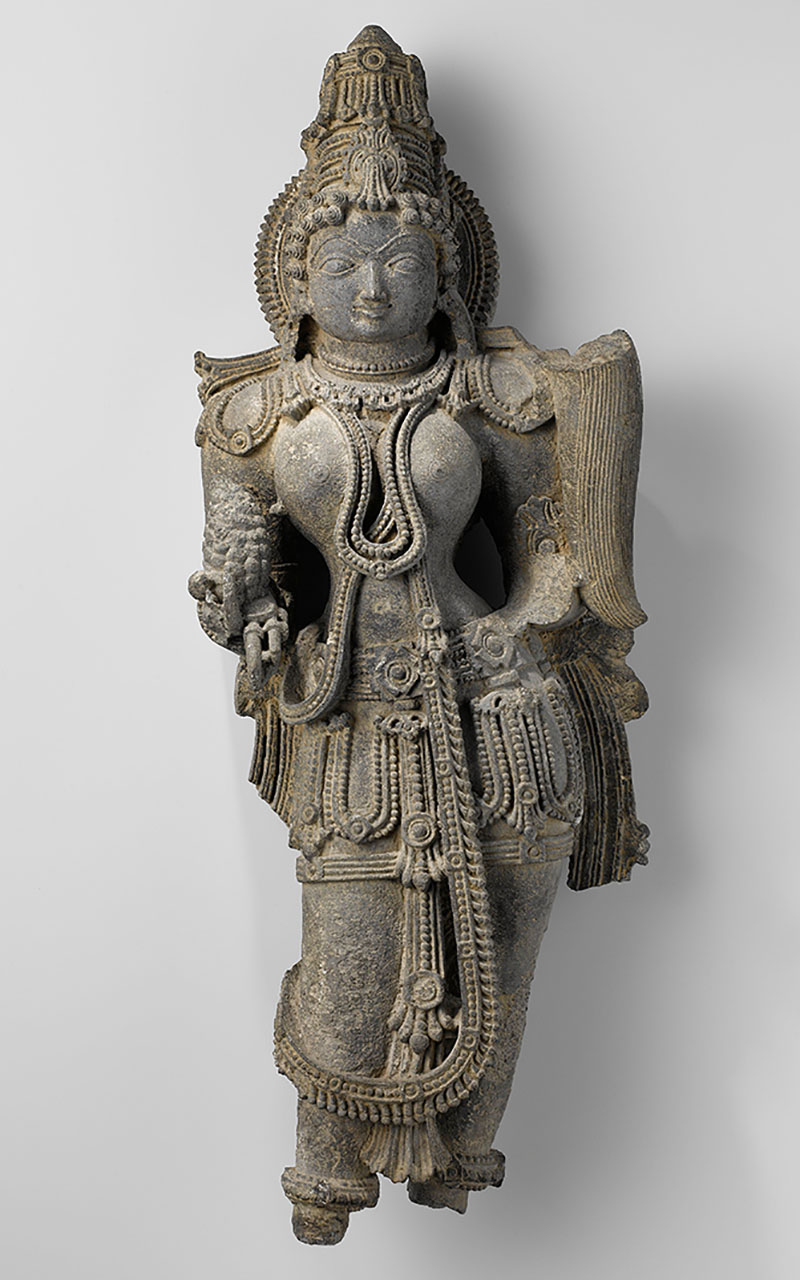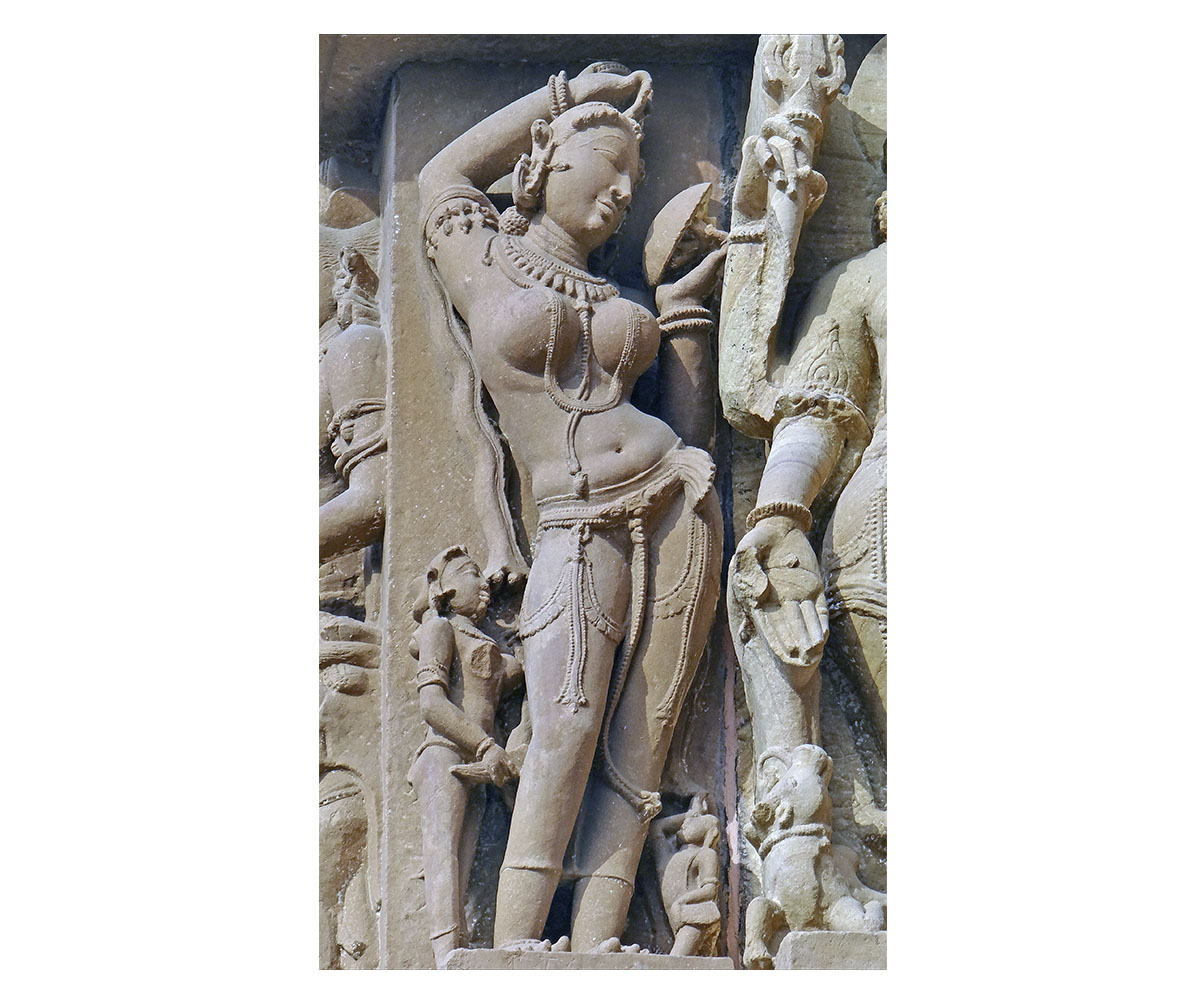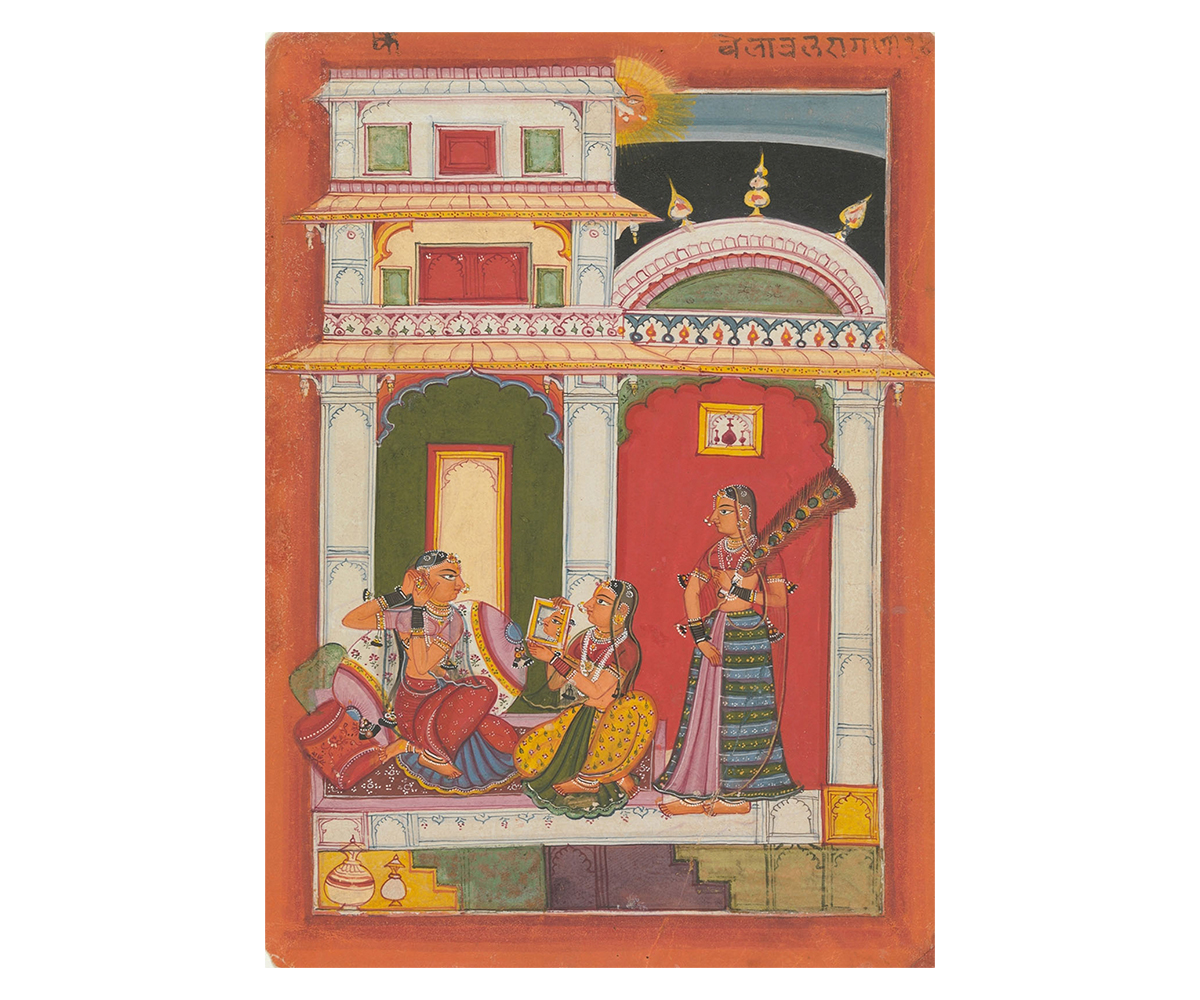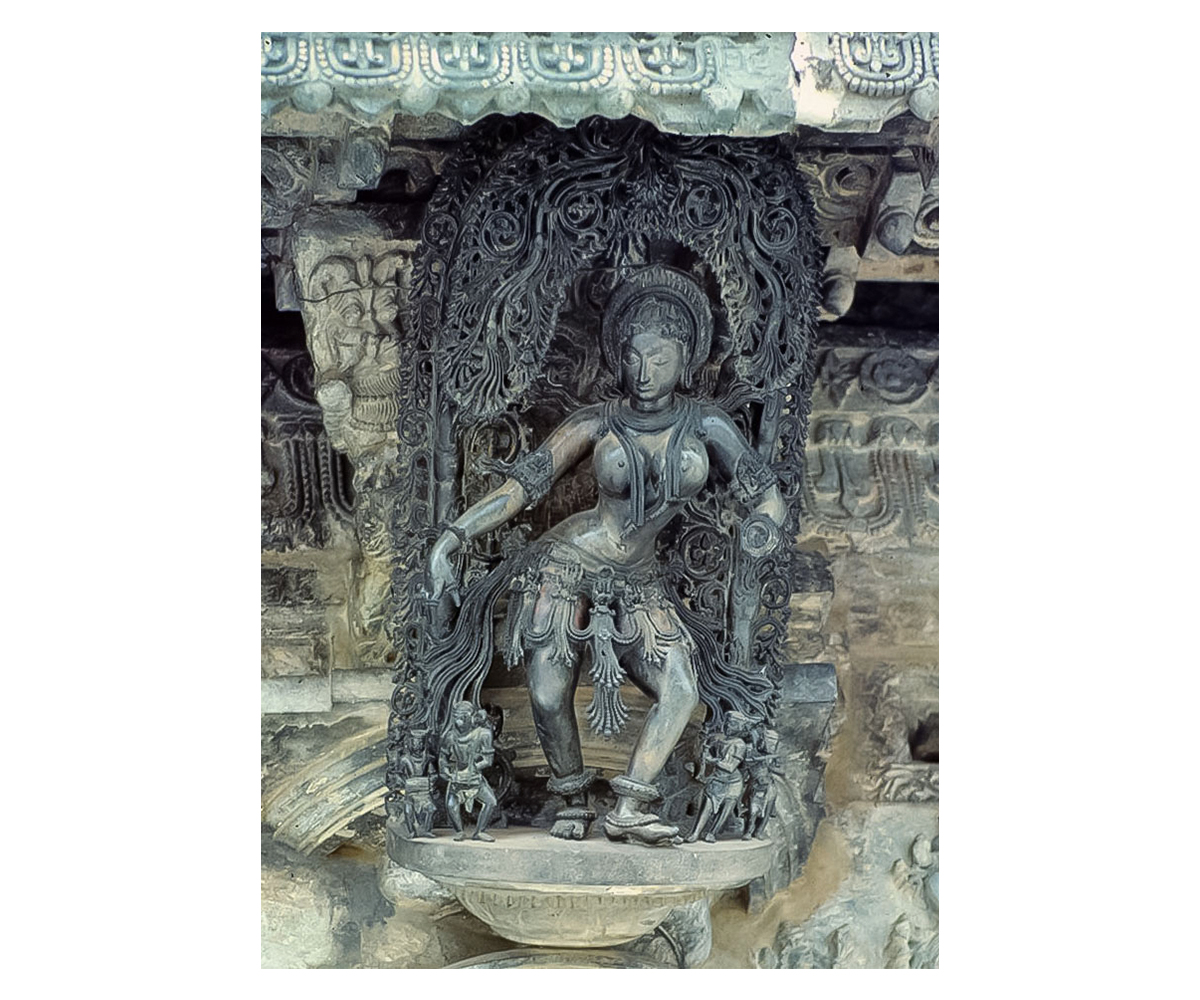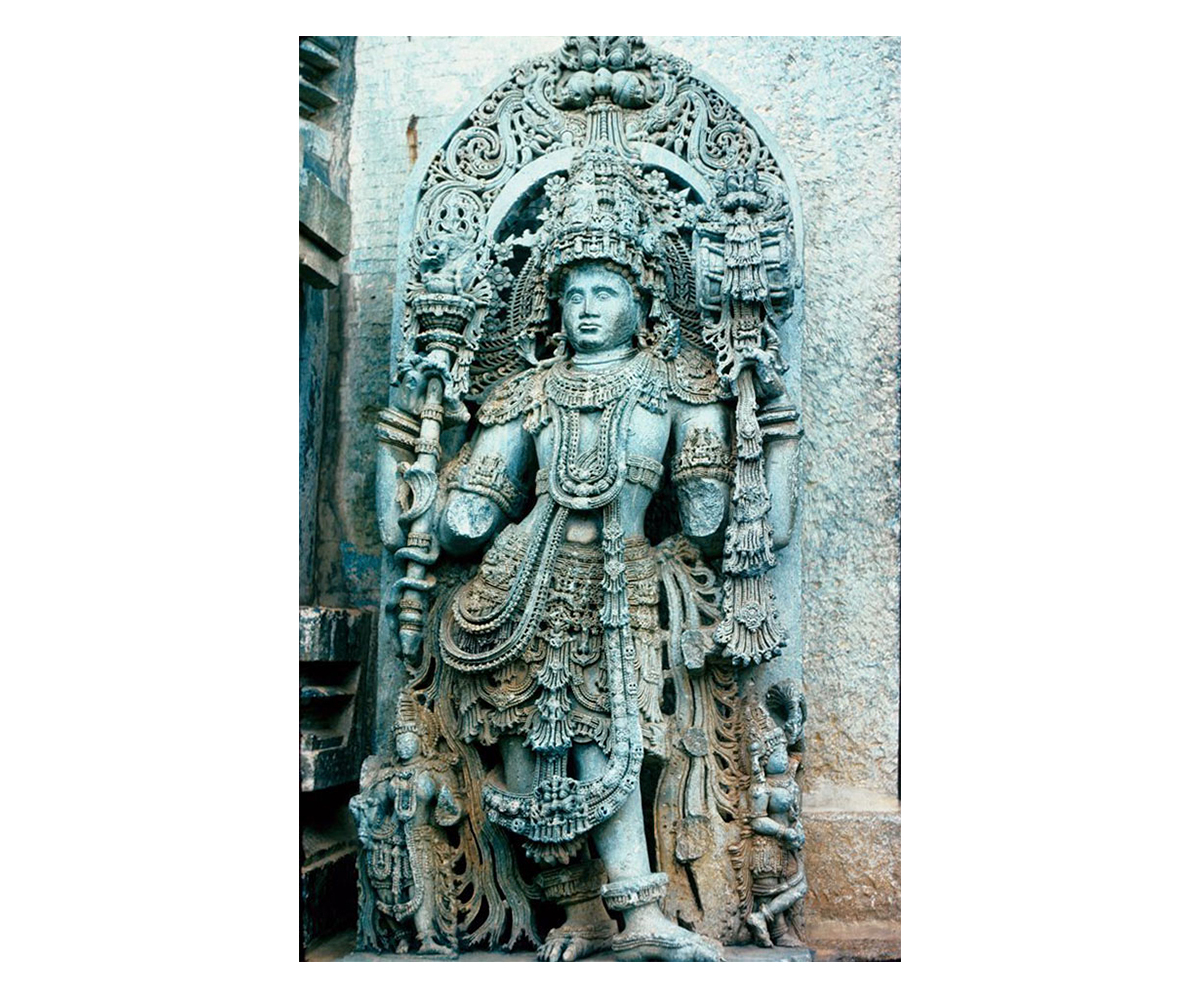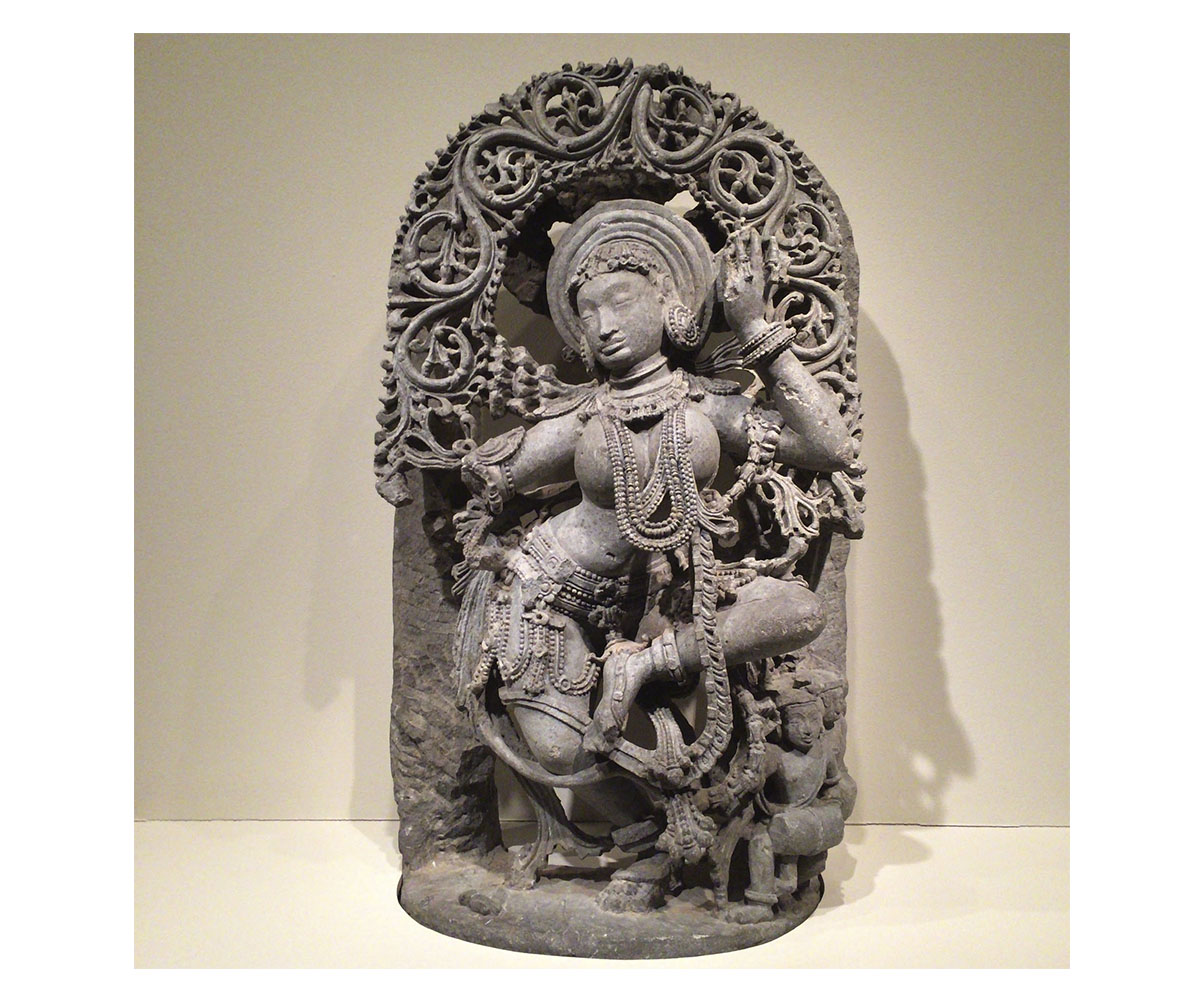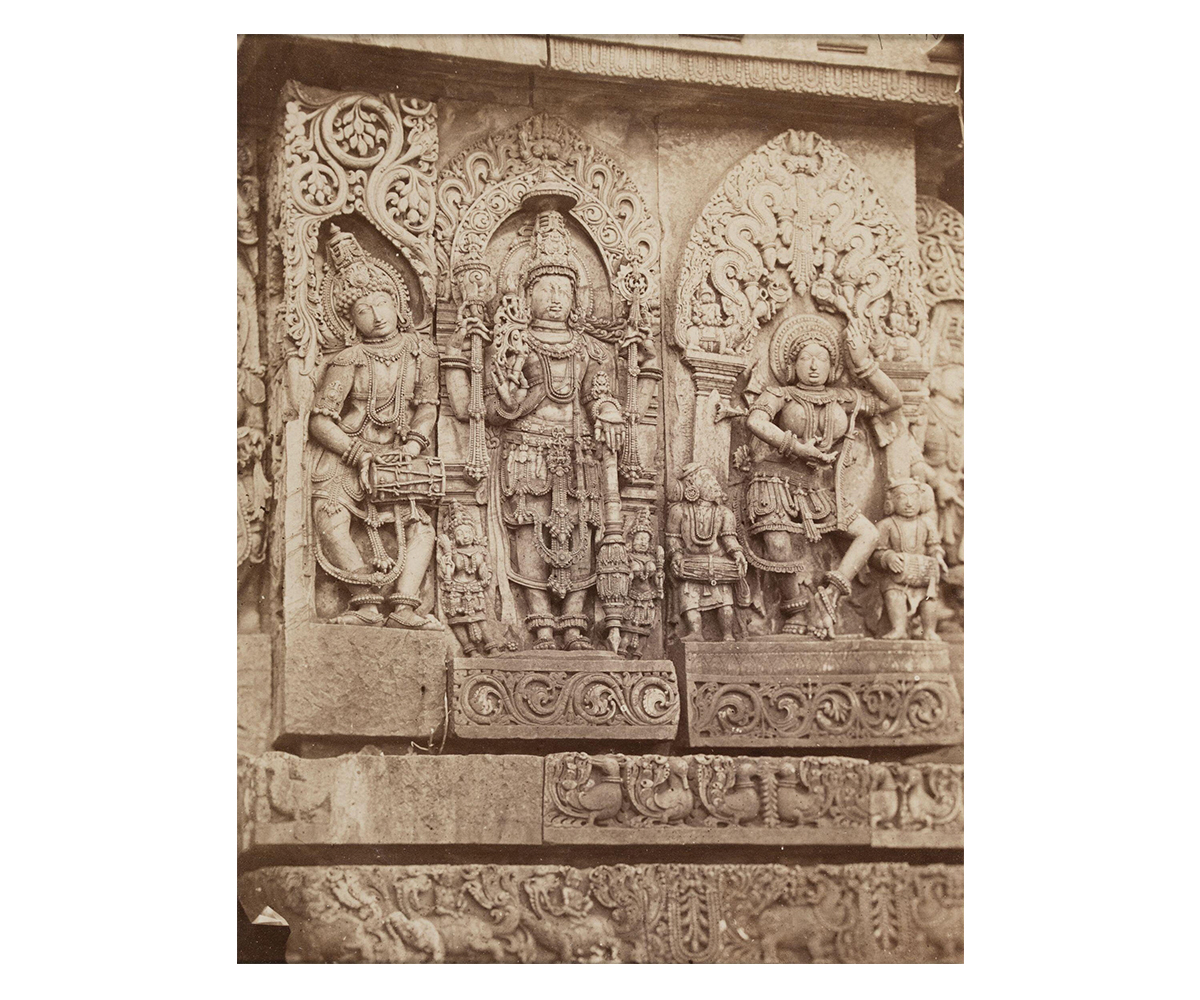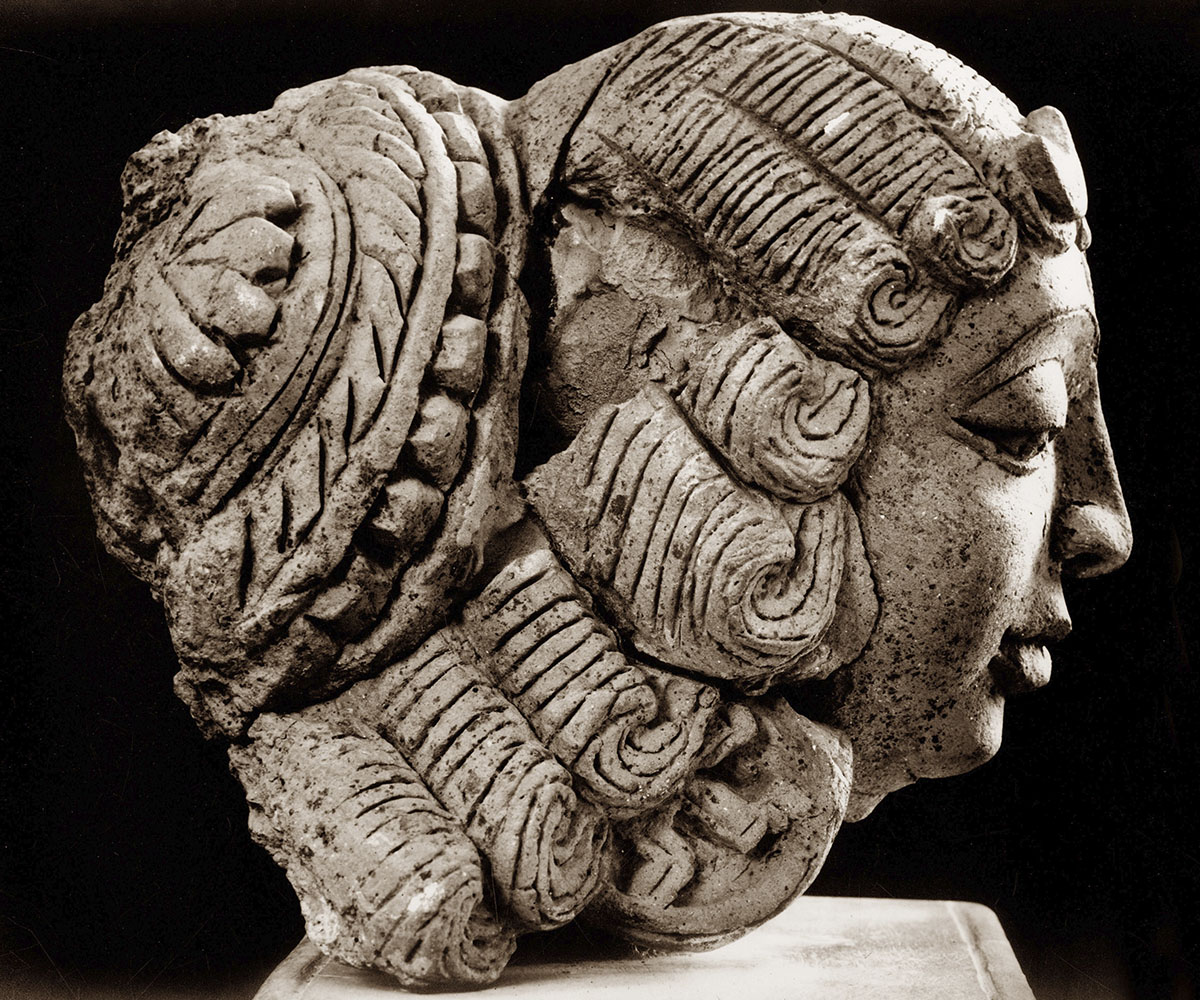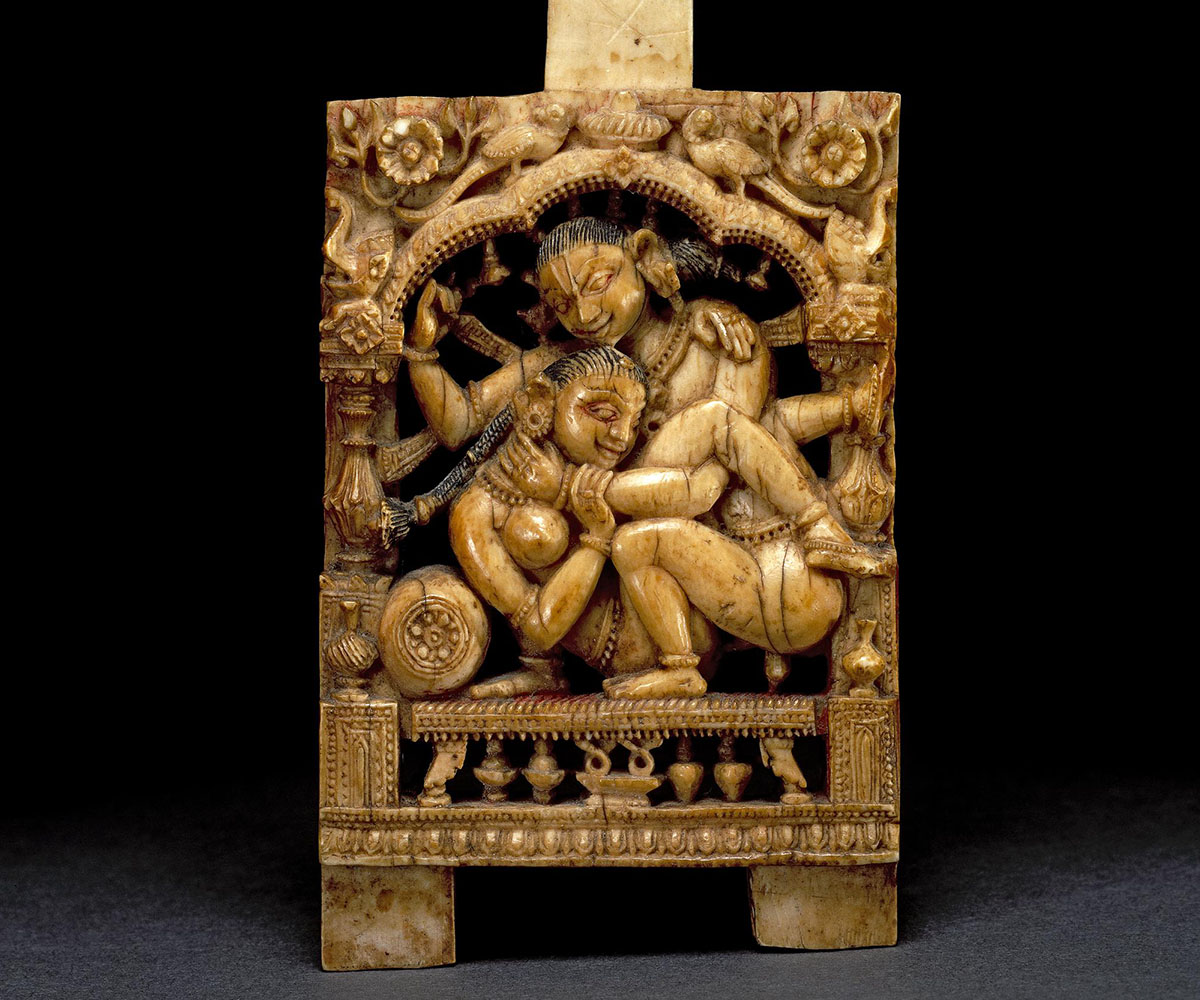ARTICLE
Alamkara
Essential to the body and signifier of auspiciousness, the concept of alamkara is extended to temple icons and deities as well, whereby the act of adornment is articulated through the ritual of puja where offerings such as garments, jewels, fragrant oils and flowers are made to the deity in order to make the icon available for auspicious viewing or darshan.
Adornments and auspicious bodily marks have also been identified as important features of life at royal courts. In its courtly context, the term has been broadly applied to such elements as jewellery, bodily sensuality and movements, physical attributes, posture, gestures. These external attributes were thought to be closely associated with internal or spiritual attributes such as knowledge, codes of conduct and morality which were also considered a person’s adornments and together with external adornments contributed to conceptions of beauty, virtue, and ethical and cultural refinement. References have also been made to how the very act of royal patronage through the building of structures such as wells, tanks, temples, gardens, audience halls is akin to alamkara.
Because external beauty and adornments might have conveyed morality in early modern courtly life, portraits and sculptural representations of important personages, royal and otherwise, are depicted laden with jewels, auspicious marks and symbols, perfect bodily attributes and other elements of alamkara.
Bibliography
Ali, Daud. Courtly Culture and Political Life in Early Medieval India. Cambridge Studies in Indian History and Society 10. Cambridge, UK; New York: Cambridge University Press, 2004.
Dehejia, Vidya. The Body Adorned: Dissolving Boundaries Between Sacred and Profane in India’s Art. Ahmedabad: Mapin Pub, 2009.
Desai, Devangana. Khajuraho. New Delhi: Oxford University Press, 2000.
Gonda, Jan. “The Meaning of the Word Alamkara.” In Selected Studies, Vol. 2, Sanskrit Word Studies, 2:257–74. Leiden: Brill, 1975.




